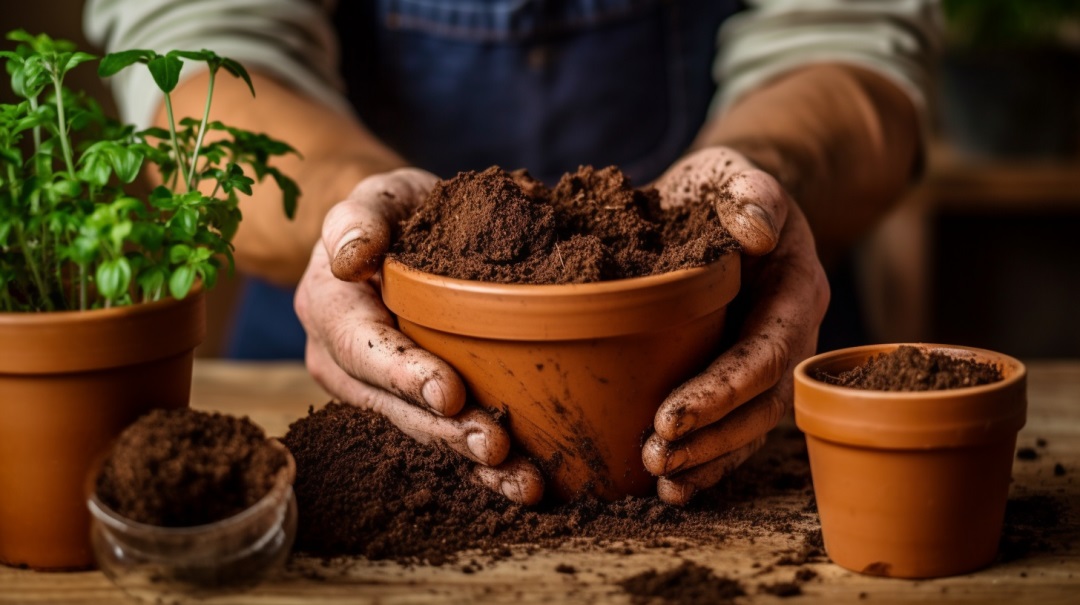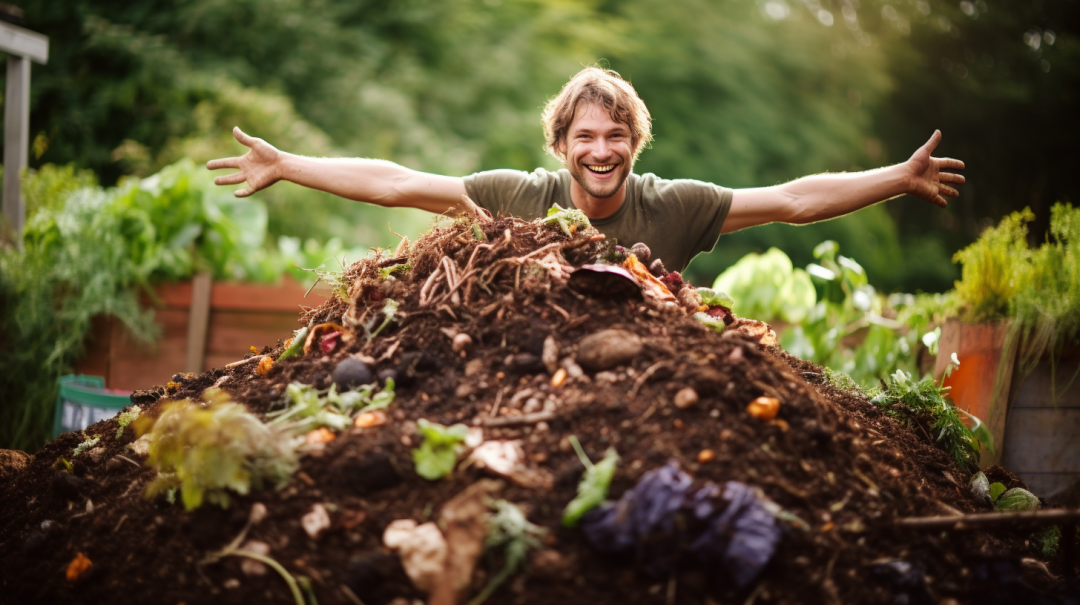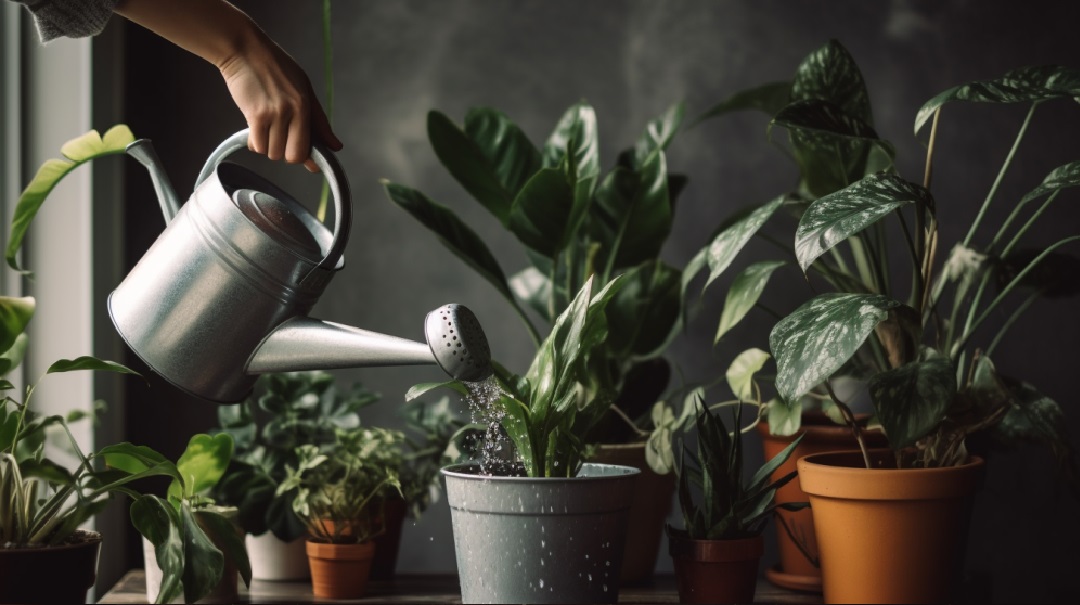The Beginner’s Guide to Organic Gardening
Organic gardening is an environmentally-friendly, healthy way to grow your own fruits, vegetables, and herbs using natural methods and materials. Avoiding synthetic chemical pesticides and fertilizers, organic gardening works with nature to produce nutritious food while protecting and enriching the soil.
What is Organic Gardening?
Organic gardening follows a set of core principles to avoid toxins and work in harmony with natural ecosystems. These principles include:
- Building healthy soil with compost, manures, and natural amendments to nourish plants
- Using preventative methods like crop rotation, companion planting, beneficial insects, and organic sprays for pest and disease control
- Choosing organic, non-GMO seeds and transplants grown without chemical inputs
- Relying on natural and organic fertilization techniques like compost tea, cover crops, and organic amendments
- Weeding and cultivating manually or with organic mulches to prevent weed growth
- Reducing water usage through smart irrigation, mulching, and drought-tolerant plants
- Focusing on biodiversity and holistic growing practices for overall garden health
Organic gardening takes a proactive, systems-based approach that ultimately creates resilient and productive gardens full of healthy, vibrant plants.
The Fundamentals of Organic Gardening
Growing a thriving organic garden starts with understanding a few fundamental best practices:
Build Healthy Soil
Soil health is the foundation of organic gardening. Rich, fertile soil gives plants the nutrients they need and beneficial microorganisms that boost resistance to pests and diseases. Support soil life with compost, reduced tillage, cover crops, and more.
Control Pests Naturally
Growing healthy, stress-free plants is the first step to prevent pest and disease issues. Use row covers, companion planting, crop rotation, and organic sprays as needed.
Use Preventative Methods
Actions like companion planting, crop rotations, biodiversity, and attracting beneficial insects prevent problems before they start.
Feed Your Soil
Use natural fertilizers like compost, manure, cover crops, and organic amendments to enrich soil nutrition over time.
Mulch Consistently
Mulch retains moisture, suppresses weeds, and improves soil as it breaks down. Replenish mulch layers as needed.
Know Your Microclimate
Understand the specific conditions in your yard that impact plant growth like sunlight, wind, drainage, and more. Choose suitable crops for each area.
Group Plants Wisely
Plan placements and combinations to maximize compatibility, growth, pollination, and yields based on sunlight, water needs, and companions.
Garden Efficiently
Use techniques like succession planting, intercropping, vertical gardening, and maximizing space to get the most out of your growing area.
Adapt to Conditions
Adjust your approach to suit seasonal weather, climate trends, and environmental factors each year. Expect some failures and learn from them.
Mastering these core organic gardening fundamentals empowers you to grow vibrant, thriving gardens naturally.
Building Fertile Soil
Soil health is the foundation of organic gardening. Rich, fertile soil gives plants the nutrients they need and beneficial microorganisms that boost resistance to pests and diseases. Here are some tips for building great soil:
- Add compost: Mix in 2-4 inches of compost before planting. Compost feeds soil microbes and provides a slow release of nutrients.
- Use cover crops: Planting clover, legumes, buckwheat or rye in unused garden beds helps prevent weeds, builds organic matter, and adds nitrogen. Turn under crops before planting.
- Mulch: Spread 2-4 inches of organic mulch like wood chips, straw, or grass clippings around plants to retain moisture, suppress weeds, and improve soil as it decomposes.
- Rotate crops: Rotating plant families in each bed from year to year prevents nutrient depletion and disease buildup.
- Test soil pH: Test your soil pH yearly and add lime or sulfur as needed to reach the ideal range for your crops. Most do best around 6.5 pH.
- Add organic amendments: Beyond compost, organic fertilizers like manure, bone meal, blood meal, and dried seaweed can provide targeted nutrition.
- Reduce tillage: Limit digging and turning soil to protect the diverse soil ecosystem. No-till methods further encourage soil life.
- Plant cover crops: Sow nitrogen-fixing legumes, buckwheat, rye and other cover crops to boost nutrients, organic matter, and soil structure.
- Grow vertically: Use trellises, cages, poles, and fences to grow vines and climbers upwards to maximize space.
- Solarize soil: Heat soil under clear plastic sheets to kill weeds, diseases, and pests in preparation for planting.
Continually replenishing soils with organic matter and limiting any practices that damage soil life will lead to sustained fertility.
Organic Fertilization
While compost and cover crops provide baseline nutrition, growing plants often need more nutrients. Organic fertilizers feed plants without synthetics or chemicals. Here are great options:
- Compost tea: This mild organic “tea” is made by steeping compost in water. It provides beneficial microbes and soluble nutrients.
- Manure: Composted, aged manure from cows, chickens, horses, etc. offers an excellent slow-release nutrient boost. Avoid fresh manure which could “burn” plants.
- Bone and blood meal: These dry powder amendments derived from animal products supply nitrogen and phosphorus.
- Seaweed: Dried seaweed and kelp contain micronutrients and growth hormones that benefit plant and soil health.
- Rock minerals: Mined minerals like greensand and rock phosphate release nutrients slowly. Spread according to package directions.
- Organic fertilizers: Look for packaged products approved for organic use, derived from natural sources like plant meals or mined minerals.
- Fish emulsion: This liquid fertilizer adds micronutrients. The fishy odor fades quickly after application.
- Compost/manure teas: Water steeped with compost or manure provides a nutrient-rich foliar feed.
When using organic fertilizers, do soil tests to identify nutrient shortages before applying. More isn’t always better – over-fertilization can damage soil biology.
Composting For Your Organic Garden
Compost is the miracle ingredient for supercharging soil health. This organic matter feeds essential soil microbes and provides a slow-release nutrition source.
Composting Materials
Gather organic waste materials like leaves, grass clippings, straw, vegetable scraps, coffee grounds, crushed eggshells, and aged manure. Avoid any meats, oils or non-organic matter. Aim for a mix of “greens” and “browns.”
Composting Methods
- Open piles or bins – Turning frequently maximizes decomposition.
- Worm bins – Worms speed the composting process.
- Tumblers – Revolving drums makes turning simple.
- Heaps – Piles left to slowly decay on their own.
- Sheet composting – Layering compost materials directly onto garden beds.
Using Finished Compost
Cured compost becomes dark, crumbly, sweet-smelling, and cool to the touch. It’s now ready to:
- Dig into garden beds each season
- Side dress around plants through the growing year
- Create compost tea to feed soil biology
- Use as mulch under trees and shrubs
- Add to potting mixes for containers
- Top dress lawns and grasslands
Homemade compost is “black gold” for your organic garden!
Controlling Pests and Diseases
Growing a healthy garden is the first step to prevent pest and disease issues. Organic treatments avoid chemicals while keeping plants protected.
Preventative Strategies
- Choose resistant varieties
- Use row covers as barriers
- Rotate crops
- Attract beneficial insects
- Remove diseased plants promptly
- Allow ample space for air circulation
- Use organic sprays only when absolutely necessary
- Use companion planting configurations
Organic Pesticides
- Neem oil: Derived from the neem tree, it controls fungal diseases, mites, and insects
- Pyrethrin: Made from chrysanthemums, it controls beetles, aphids, and other pests
- Insecticidal soap: Potassium salts of fatty acids kill soft-bodied insects like aphids
- Bacillus thuringiensis (Bt): This bacteria controls caterpillars and other larvae
- Garlic-pepper spray: Repels certain pests like aphids, whiteflies, and beetles
- Kaolin clay: This powder deters pests when sprayed on plant surfaces
- Horticultural oils: These oils smother and kill aphids, mites, and other soft-bodied insects
Only use organic pesticides when absolutely needed. Spot treat affected plants and avoid overuse. Focus on growing vigorously healthy plants naturally resilient against pests.
Smart Weed Control
Weeds compete with garden plants for water, space, and nutrients. Controlling them is critical, but herbicides are prohibited in organic gardening. Alternative organic methods include:
- Mulching: Block light to prevent weed seeds from sprouting using 2-4 inch mulch layer. Replenish mulch as needed.
- Corn gluten meal: This organic product inhibits root formation and seed germination. Spread in early spring.
- Vinegar: Use horticultural vinegar to kill unwanted vegetation. Take care to avoid harming desired plants.
- Boiling water: Pouring boiling water directly on weeds from pavement cracks and walkways is effective.
- Flame weeding: Using a propane torch on weeds destroys cells and desiccates growth. Extreme caution is required.
- Solarization: Smother weeds by covering areas with clear plastic for 1-2 months in summer sun. Works best on small areas.
- Cultivation: Manually dig and remove weeds. Use tools like stirrup hoes to slice weeds away from desired plants.
- Cover crops: Plant buckwheat, rye, clover or grains as a smother crop to outcompete weeds.
- Cardboard/newspaper sheets: Covering areas with sheets of cardboard or newspaper smothers weeds and grasses.
No single technique will control all weeds. Often combining physical removal, barriers with mulch or cover crops, and targeted applications of organic products works best. Be vigilant and don’t let weeds go to seed.
Companion Planting
Companion planting combines specific plant varieties together to benefit each other. For example, pairing lettuce with radish, carrot, or onion improves flavor. Here are some other great companion plant pairs:
- Tomatoes and basil
- Beans, corn, and squash
- Cabbage and dill
- Chard and garlic or onion
- Radishes and lettuce
- Petunias and broccoli
Certain plants also help repel pests from their neighbors. These include:
- Marigolds repel nematodes
- Lavender repels moths, fleas, and more
- Garlic and chives ward off aphids and beetles
- Petunias keep asparagus beetles away
- Radishes protect squash from squash borers
Mixing compatible plants that enhance flavor or deter pests creates an organic pest control system right in your garden beds!
The Importance of Crop Rotation
Rotating crops in each bed every 1-3 years is a critical organic gardening practice. It prevents the buildup of soil diseases and nutrients imbalances associated with planting the same crops repeatedly in one spot.
Use longer rotations for crops prone to disease like tomatoes, squash, broccoli, potatoes, and cucumbers. Move plant families around – for example, avoid planting tomatoes where eggplant, peppers, or potatoes recently grew.
Track crop rotations with a garden map each season. This gives soil time to regenerate between similar crops. It also confuses pests and depletes pest and disease life cycles in the soil.
Here is an example 3-year rotation plan for a vegetable garden:
Year 1 Bed A: Tomatoes, basil, onions
Bed B: Broccoli, cabbage, lettuce Bed C: Squash, cucumbers, beans
Year 2 Bed A: Carrots, beets, radish Bed B: Beans, peas, spinach Bed C: Potatoes, garlic, leeks
Year 3 Bed A: Squash, cucumbers, beans Bed B: Tomatoes, basil, onions Bed C: Broccoli, cabbage, lettuce
Attracting Pollinators and Beneficial Insects
Pollinators like bees, butterflies, and helpful predators such as ladybugs and lacewings are vital to a healthy organic garden. Attract these beneficial insects by:
- Planting pollinator-friendly flowers like zinnias, cosmos, bee balm, and coneflowers
- Providing sources of water like a small pond, fountain, or bird bath
- Avoiding pesticides that could harm insects and pollinators
- Installing bee nesting houses and overwintering sites
- Letting areas of the garden grow wild to shelter beneficial species
- Grouping small flower plantings throughout the garden to feed pollinators
- Planting native flowering herbs, vegetables, and annuals to support local pollinators
A vibrant ecosystem of pollinators and predatory insects reduces the need for any pest control inputs at all. Support them and they’ll support your garden!
Organic Gardening vs Traditional Gardening
Organic gardening takes a different approach than more conventional chemical-based gardening. Here’s a quick look at some key differences between the two methods:
| Organic | Traditional |
|---|---|
| Builds soil naturally with compost, manures | Relies more on synthetic fertilizers |
| Emphasizes disease prevention | Treats disease reactively |
| Controls pests with beneficial insects, organic sprays | Controls pests with pesticides |
| Hand weeding, mulching for weed control | Uses chemical herbicides |
| Encourages biodiversity of plants and insects | Focuses on selected crops |
| Avoids GMOs | May utilize GMO crops |
| Reduced water usage | Higher water needs |
| Higher labor needs | Lower labor needs |
| May have lower yields | Higher yields |
While traditional gardening often provides higher yields, many gardeners feel organic methods are better for human and environmental health. Others find a middle ground using responsible integrated pest management. Gardening organically also develops a deeper connection with the rhythms of nature.
Key Tips for Beginning Organic Gardeners
Transitioning to organic gardening can take a few seasons as you rebuild your soil and biological ecosystem. Be patient, start small, and stick to these tips:
- Add compost and organic matter regularly to nourish soil
- Use raised beds and containers to manage plant locations
- Cover bare soil with mulch or cover crops to prevent weeds
- Learn about beneficial plants, pests, and pollinators in your region
- Try companion planting and crop rotations
- Test different organic fertilizers and natural pest remedies to find what works
- Keep detailed notes each season to track rotations, pests, yields, and more
- Adapt chosen crops, varieties, and planting dates to fit your organic system
- Consult local organic gardening resources, groups, and cooperative extensions
- Consider getting a soil test to understand your soil chemistry and needs
- Use soaker hoses and drip irrigation to provide consistent moisture efficiently
- Accept that some crop losses and imperfections are normal! The goal is overall garden health.
- Start seeds indoors to get a head start on the growing season
- Use season extending techniques like cold frames, tunnels, and cloches
With practice, you’ll unlock the secrets to growing thriving organic fruits, vegetables, and herbs through methods aligned with natural systems. The rewards are well worth the effort!
Additional Organic Gardening Resources
Transitioning to organic methods can take time and continued learning. Here are fantastic books, websites, and organizations to deepen your knowledge:
Books
- Gaia’s Garden: A Guide to Home-Scale Permaculture by Toby Hemenway
- The Vegetable Gardener’s Bible by Ed Smith
- The Old Farmer’s Almanac Vegetable Gardener’s Handbook
- Four-Season Harvest by Eliot Coleman
- Rodale’s Ultimate Encyclopedia of Organic Gardening
- Mini Farming: Self-Sufficiency on 1/4 Acre by Brett L. Markham
Websites
- GrowOrganic.com
- The Old Farmer’s Almanac
- OrganicGardening.com
- UMASS Amherst Center for Agriculture, Food, and the Environment
- UC Davis Integrated Pest Management Program
- SARE Learning Center
Organizations
- National Gardening Association
- American Community Gardening Association
- Natural Resources Defense Council
- The Organic Center
- National Sustainable Agriculture Coalition
- Xerces Society
Local Resources
Don’t overlook the advice and training available from local organic gardening groups, university extensions, nurseries, and more. Search for resources specific to your growing region.
The Benefits of Organic Gardening
Growing produce and flowers organically offers numerous advantages:
- Healthier plants unexposed to synthetic chemicals
- Higher nutrient levels in many organic crops
- Improved soil structure and water retention
- An ecosystem approach that encourages biodiversity and ecological harmony
- Reduced pollution and fossil fuel usage from fertilizer and pesticide production
- Lower risk of chemical exposures for families and wildlife from residues
- Keeps toxic compounds out of watersheds and groundwater
- Alleviates impacts to bees, butterflies, and other beneficial species




Leave a Reply